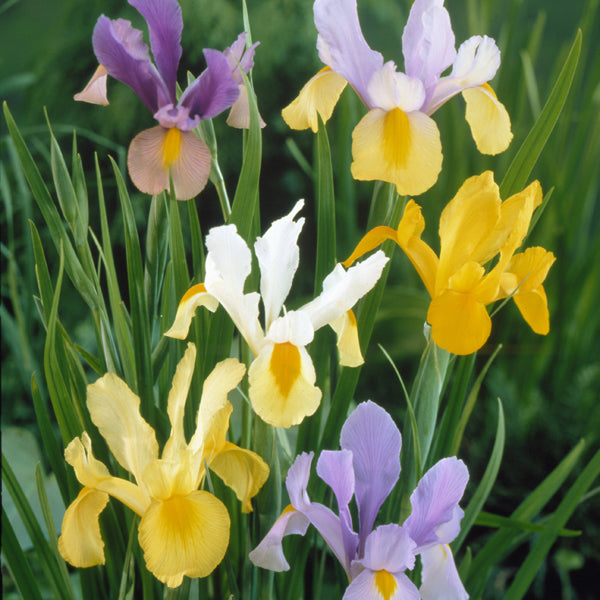Planting Guide
Dutch Iris

How to Plant Dutch Iris Bulbs
Hardiness and planting time:
Dutch iris (Iris hollandica) are hardy perennials that can tolerate temperatures down to around -15°C, making them suitable for planting directly outdoors in most regions. The best time to plant Dutch iris bulbs is from September through December, either in garden borders or in patio containers.
Soil and location:
These bulbs prefer free-draining soil but will also tolerate heavier soils that have some clay content, provided drainage is improved. For container planting, use a soil-based compost or a multipurpose mix with added loam. Choose a sunny position for the strongest flowers, though Dutch irises will also grow well in light partial shade.
How to plant Dutch iris bulbs:
Plant bulbs with the pointed end facing upwards, setting them about 10–15 cm deep in borders or containers. Space bulbs 5–10 cm apart to allow enough room for growth while still creating a striking display.
Watering and care:
After planting, water the bulbs well to help them establish. During their first year, keep the soil lightly moist while they are in active growth. Once established, Dutch irises typically need little additional water unless the weather is very dry.
After flowering:
When the blooms fade, cut back the flower stems but leave the foliage in place until it naturally dies back, as this allows the bulb to store energy for the following year. In autumn, trim back the foliage to ground level. Dutch iris bulbs are fully hardy and can be left in the ground year-round without the need for frost protection.








